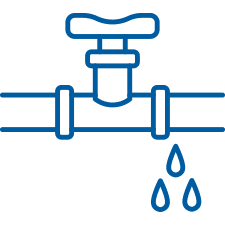When it comes to home energy efficiency, your attic insulation might be the hero you never see—but definitely feel. If your home is struggling to stay warm in the winter or cool in the summer, poor insulation could be silently draining your wallet. At Perma-Seal, we help homeowners throughout the Chicagoland area enhance comfort, minimize energy waste, and lower their utility bills with high-performance attic insulation solutions. The local climate in Chicagoland, with its cold winters and hot summers, makes proper attic insulation especially important. Different climate zones require specific insulation strategies to address unique heating and cooling needs.
Let’s break down how attic insulation saves you money and keeps your home consistently comfortable—year-round. The size of your home also plays a significant role in determining the effectiveness of attic insulation; larger homes often experience greater energy savings and a higher return on investment from proper insulation.
Why Attic Insulation Matters
Your attic plays a massive role in your home’s thermal envelope. Because hot air rises, a poorly insulated attic allows valuable heat to escape in the winter. In the summer, it becomes a heat trap, making your air conditioning work overtime to cool the space below—an overworked air conditioner can lead to higher energy consumption and increased costs. Properly insulating your attic helps reduce heating and cooling costs, improves energy efficiency, and enhances overall home comfort.
Without sufficient attic insulation, your HVAC system runs longer and harder—leading to higher utility bills, unnecessary strain on your equipment, and inconsistent indoor temperatures. Keeping your HVAC filters clean is also crucial for maintaining system efficiency and minimizing unnecessary strain.

Understanding Air Leaks
When it comes to cutting your electricity bills and making your home more comfortable, understanding air leaks is a crucial step. Air leaks are hidden gaps and cracks in your home’s envelope—often found around doors, windows, and even in the basement—that let conditioned air escape and unconditioned air sneak in. This means your HVAC systems have to work overtime to meet your heating and cooling needs, driving up your energy costs and putting extra strain on your system.
According to the U.S. Energy Information Administration, thousands of homeowners lose money each year due to energy waste from air leaks. In fact, sealing air leaks can reduce your energy consumption by up to half, especially when combined with efficient insulation and a well-maintained HVAC system. The Department of Energy’s website (energy.gov) offers a wealth of information and data on how air leaks impact your home’s energy use, as well as tips on how to address them.
To determine the level of air leaks in your home, start by inspecting common trouble spots—check around doors, windows, attic hatches, and basement rim joists. On a windy day, you can use a lit incense stick or a light piece of tissue to detect drafts. If the smoke or tissue moves, you’ve found a leak. Sealing these gaps with weatherstripping, caulk, or expanding foam is a simple way to bring your energy costs down and improve your home’s comfort level.
But don’t stop there. Choosing energy-efficient products and systems, such as high-performance HVAC units or renewable energy solutions like solar panels, can further reduce your reliance on fossil fuels and cut your electricity bills. Adjusting your thermostat when you’re asleep or away, using power strips for electronics, and turning off lights and appliances when not in use are all easy ways to continue saving energy and money.
Taking the time to seal air leaks and upgrade to efficient systems is an investment that pays off in the long run—providing you with significant energy savings, a more comfortable home, and a cleaner environment. For more details and a step-by-step guide, you can access resources on the Department of Energy’s website or contact Perma-Seal for expert advice and solutions tailored to your specific needs.
By staying proactive and informed, you can prevent energy waste, save money, and enjoy a healthier, more efficient home—no matter the season.
Real Energy Savings from Proper Insulation
The U.S. Department of Energy estimates that homeowners can save up to 15% on heating and cooling costs by air sealing their home and adding proper insulation in attics, crawl spaces, and floors over unconditioned spaces, based on studies of typical U.S. homes.
For Chicagoland homes, which experience wide seasonal temperature swings, those savings can be even greater when combined with other improvements such as air sealing, attic insulation, attic ventilation, and moisture control. Energy usage can fluctuate significantly on especially hot or cold days, making insulation even more valuable. Proper insulation helps your home consume less energy for heating and cooling, leading to lower utility bills and improved comfort.
Real-World Example:
Let’s say your monthly energy bill averages $200 for a typical house with average energy usage. A 15% savings equals $30 per month—or $360 per year. That adds up quickly, especially when you factor in long-term ROI and the potential increase in home resale value.
Keep in mind, your actual ROI may vary depending on the type of insulation you choose and the type of house you have.
ROI: Attic Insulation Is One of the Best Home Investments
According to Remodeling Magazine’s Cost vs. Value Report, attic insulation offers one of the highest returns on investment among home improvement projects—often over 100%.
Not only do you get long-term savings, but you also increase your home’s market appeal. More buyers are prioritizing energy efficiency, and proper insulation is a major selling point.
Signs Your Attic Insulation May Be Costing You
Are you unsure if your insulation is performing as expected? Here are some common red flags:
- Drafty rooms or inconsistent indoor temps
- High energy bills, especially during peak seasons
- Icicles or ice dams forming along the roofline
- Excessive dust or poor indoor air quality
- Attic insulation appears compacted, wet, or moldy
- If your home feels drafty or loses heat quickly when doors and windows are closed, it may be a sign of inadequate attic insulation.
If you’re noticing any of these signs, it’s time for an attic inspection.

Ready to Unlock Energy Savings? Contact Our Team Today
Yes—attic insulation absolutely can help you save on heating and cooling bills. When installed properly, it reduces energy waste, protects your home from seasonal extremes, and delivers an excellent ROI. If you’re tired of high bills and drafty rooms, now’s the time to take action.
Schedule a free attic insulation assessment with Perma-Seal today and discover just how much you could be saving. Explore your attic insulation options or additional resources to maximize your energy savings.







